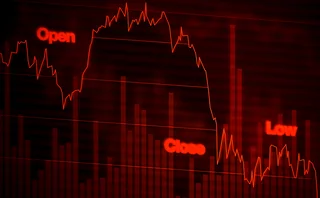
Testing times

The dramatic developments of the past month and the resulting shifts in asset prices have left many industry leaders struggling to get a handle on the implications for their businesses. In part, that's because the events are consistently dramatic and market-moving - although not always in the expected direction.
Within days of each other in September, Lehman Brothers filed for bankruptcy protection and AIG received an $85 billion rescue from the US government - and this only shortly after the placement of mortgage agencies Fannie Mae and Freddie Mac into 'conservatorship'. The US Treasury then moved to obtain $700 billion to bail out the markets. US politicians dithered and then approved use of the funds.
In Europe, Benelux bancassurer Fortis and Germany's biggest mortgage lender, Eurohypo, both received state aid. Then the UK government moved to inject £50 billion ($86 billion) of capital into UK banks in exchange for equity - a move likely to be copied by other governments, as direct capital injections are a relatively cheap way to support lending, due to multiplier effects.
Meanwhile, central banks made co-ordinated rate cuts in October, led by the Reserve Bank of Australia's one percentage point cut to 6%, followed by half percentage points cut by the US Federal Reserve to 1.5%, the European Central Bank to 3.75% and the Bank of England to 4.5%, along with a 0.27 percentage point cut in China's benchmark one-year lending rate to 7.20%.
Any one of these events in isolation would typically represent a huge dislocation in the financial markets and a major headache for the book positions of dealers and their counterparties. In conjunction, the pressure was unprecedented.
At the same time, OTC financial derivatives have drawn fire, notably from the US' Securities and Exchange Commission and the New York Insurance Department, which have criticised credit default swaps and raised the issue of regulation.
Putting aside the practical difficulty of regulating a global market, the bilateral derivatives market is one of a few to have continued trading during the crisis. And credit derivatives - still relatively new instruments - have stood up to the test following the credit events at Fannie Mae, Freddie Mac and Lehman Brothers, along with the subsequent auctions of instruments linked to those names.
What appears to be required - apart from dealers cleaning up their act on clearing, processing and settlement - is improved understanding of the risks and rewards linked to the use of derivatives, as with any financial instrument. And that depends on embedded risk management, in terms of systems, staff and culture.
Christopher Jeffery.
Only users who have a paid subscription or are part of a corporate subscription are able to print or copy content.
To access these options, along with all other subscription benefits, please contact info@risk.net or view our subscription options here: http://subscriptions.risk.net/subscribe
You are currently unable to print this content. Please contact info@risk.net to find out more.
You are currently unable to copy this content. Please contact info@risk.net to find out more.
Copyright Infopro Digital Limited. All rights reserved.
As outlined in our terms and conditions, https://www.infopro-digital.com/terms-and-conditions/subscriptions/ (point 2.4), printing is limited to a single copy.
If you would like to purchase additional rights please email info@risk.net
Copyright Infopro Digital Limited. All rights reserved.
You may share this content using our article tools. As outlined in our terms and conditions, https://www.infopro-digital.com/terms-and-conditions/subscriptions/ (clause 2.4), an Authorised User may only make one copy of the materials for their own personal use. You must also comply with the restrictions in clause 2.5.
If you would like to purchase additional rights please email info@risk.net
More on Markets
‘Trump slump’ hedges rise on rate cut fears
One dealer notes five-fold increase in number of clients hedging against possibility of faster rate cuts
Short-term Trump FX trades ‘dead’ as euro rallies
EUR/USD spot rally and vol spike sees mass unwinds of long USD trades
Disappearing dealer gamma spurs wild stock swings
Stock market sell-off leaves dealers perilously close to peak short gamma positioning
German defence announcement hits steepener trades
Rapid euro curve flattening following Merz’s comments last week caught out a number of hedge funds, say dealers
Tech firm OneChronos to offer ‘bundled’ equity-FX trading
New auction algorithms will optimise multi-leg trades; roll-out due later this year
SRT markets kick US banks’ caution to the kerb
Market for capital relief trades continues apace despite US banks’ reluctance to offer leverage
Hedge funds flock to US swap spreads on SLR easing talk
‘Trade of the year’ sees investors position for shrinking negative basis as Treasuries predicted to outperform swaps
China programme trading rules to buoy futures market
Futures firms could adjust strategies to avoid HFT classification under new framework








